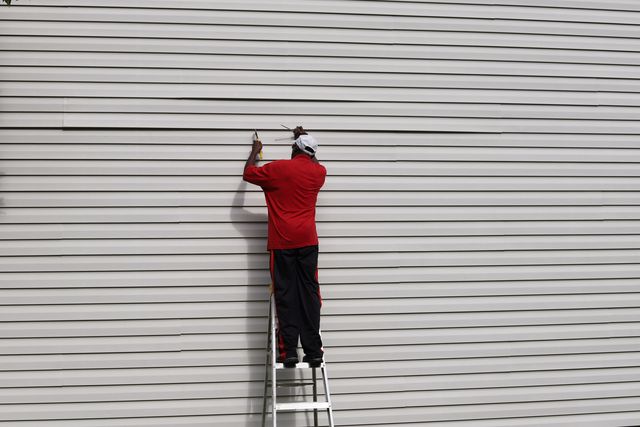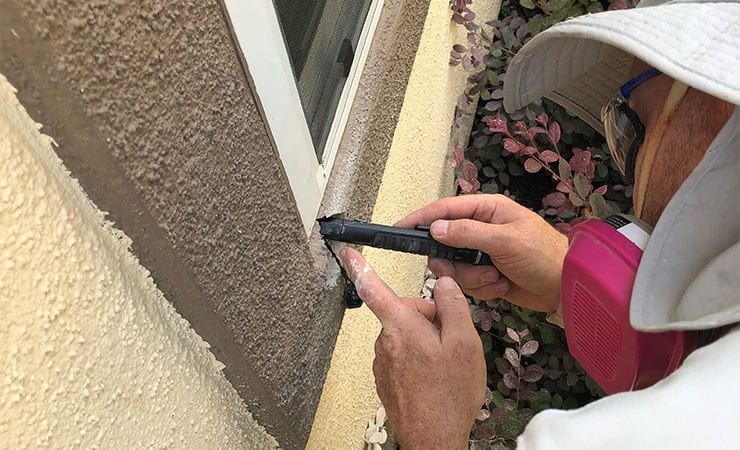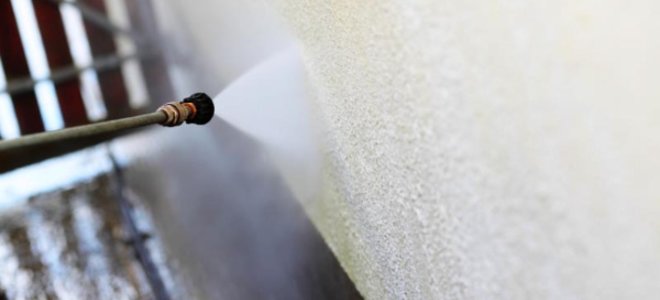
You may be looking for a quick and easy way to update the look of your home. If you think about putting siding over stucco on your house, you must know what you’re getting into before starting the project. This blog post will discuss some of the benefits and drawbacks of this approach to make an informed decision!
What is stucco, and what does it look like?
Stucco is a type of plaster used for coating surfaces, especially in warm and wet climates. The term stucco means “plaster” in Italian (stuccare is the verb). Stucco is a material that can be used for decoration as well, adding volume. It’s made from lime or gypsum/calcium sulfate with other additives such as vermiculite and expanded polystyrene beads; it also comes in the interiors of houses to add extra flair.
Stucco usually consists of a rendering with some projection (e.g., flat render over which coarse plaster is applied). It can be directly bonded to masonry surfaces like stone, brick, or concrete. Stucco finishes (e.g., smooth and white) can be directly applied to masonry, but this is generally not done where the finish coat of stucco will have direct contact with earth or water. Stucco may also give protection against weathering action by an overhanging roofline and provide insulation for walls.
Stucco is also used for decoration. Although stuccos are usually associated with the walls of buildings, they can be applied to decorative applications such as sculptures and statues (e.g., pitting or bronze casting). Stucco may refer both to the material itself, which is composed mainly of calcite lime sand/dolomite, portland cement, or mixtures thereof.
Stucco is also used to refer to the finished wall itself (e.g., smooth and white). #What are some of the characteristics?
There are several types of stucco: hydraulic and non-hydraulic. Hydraulic stuccos harden as they dry and become more durable. Hydraulic stuccos are generally used with a steel trowel on concrete, but the practice is becoming less common due to increased time and labor associated with finishing. Non-hydraulic stucco dries slowly by evaporation of the water component only (no cement), producing the same effect as hydraulic in a shorter time frame. Non-hydraulic stucco is often referred to as “drywall” or dry stucco and should not be confused with the 1950s product known as joint drywall compound (which usually contains portland cement).
Stuccos are composed of sand, lime, and water only in some cases when the finish coat is composed of a masonry cement or parge coat (e.g., Acrylic stucco).

Why might you want to put siding over stucco on the house?
• Stucco is prone to damage and deterioration. Many homeowners may want to replace the stucco on their home with something more durable, such as siding.
• The siding will help protect the house from weather conditions, such as rain and wind. It also helps keep insects out of the home.
• The stucco might not be structurally sound to support all that weight on top of it, like snow or hail during winter months. This can put undue pressure on different parts of the house.
• If you’re thinking of selling your home, siding is a better choice than stucco in terms of curb appeal and market value.
Pros and cons of adding siding over stucco
• Siding over stucco can help protect against rot and mold. This is especially helpful in places with a lot of rain or moisture, such as the Pacific Northwest region. In addition to protecting from rain damage, siding over stucco helps prevent bugs from getting into your house via cracks in the stucco.
• It’s also helpful because it gives you the option to have a different texture or material on your house that isn’t stucco. Many people don’t like how textured and dark their home looks with just plain old stucco, but if they paint over it, they will need to get someone out every couple of years to re-do the paint job.
Cons of adding siding over stucco
• While siding over stucco is an excellent way to prevent rain damage, it isn’t as effective at keeping out water if there are any cracks or holes in the stucco. This means that you may need to check your home for leaks more often than usual when adding this material.
• If you have an older house with original stucco, you may find that the siding doesn’t stick well to it. This is another reason many homeowners prefer new construction when adding this type of material over an existing home.
• While painting your home can be expensive and time-consuming – especially if you hire someone else to do it for you – some people don’t like the idea of having to hire someone else every couple of years just to keep up with the paint job.
How to do this project yourself
Steps to do this project yourself:
• Be sure you have all of the necessary safety equipment, such as gloves and goggles.
• Purchase siding explicitly made for stucco homes or buy a product like Liquid Nails to attach it on top of your existing stucco. You can also purchase materials at home improvement stores in your area.
Prepare your exterior wall
• Remove any loose stucco, old siding, and other debris.
• Make sure the wall is dry before applying Liquid Nails or your new siding.
• Protect surrounding plants and grass with a tarp to prevent damage from falling objects. Wait for the wall to dry before you attach your new sidings.
Install flooring strips
Furring strips are small wooden strips that will serve as a base for your siding. Attach them around the perimeter of your home and secure them with or screws.
• Once you have furring strips to use, check that they are even around the exterior wall before attaching new sidings using wood glue and nails or staples, depending on what type of siding material you have.
• When using liquid nails to attach siding, be sure that you follow the instructions on your can carefully and use a caulking gun for best results.
Install insulation
Installing insulation can help reduce energy usage, but it will also insulate your home against the elements.
• Insulation works best if you have at least R19 or thicker insulation in all of your exterior walls. It’s beneficial for homes with stucco exteriors because they are typically not very insulated on their own.

Install Vinyl siding
Once the insulation has dried, you can attach your vinyl siding.
• Attach the bottom edge of the first panel and work across your exterior wall one piece at a time until all panels are in place.
• Cut pieces to fit around any windows or pipes using tin snips. You may need someone’s help for this part if you don’t have access to a powered saw.
• Use finishing nails or staples along with your trim and around windows, doors, and other areas that need extra coverage.
• If you aren’t using vinyl siding on your home but want the insulation from it, consider purchasing fiberglass batt insulation instead of spray foam. It will keep out moisture while still giving you the insulation benefits.
• Use caulk or sealant to create a barrier between your new siding and any areas that are particularly prone to water damage, such as around windows or doors. This will help keep the rain out of walls in these problem spots even when they’re wet.
• Continue with this process until all exterior wall areas are finished, and then give your siding a fresh coat of paint.
• To complete the project, caulk around exterior windows or doors with silicone sealant to keep out moisture. You can also use it on any cracks in your stucco walls that you find after installation is finished, so they don’t get worse over time from water damage.
• When painting the area around your new siding, be sure to use paint explicitly made for exterior walls and ask about special sealants you may need if using stucco paints or primers on top of it.
